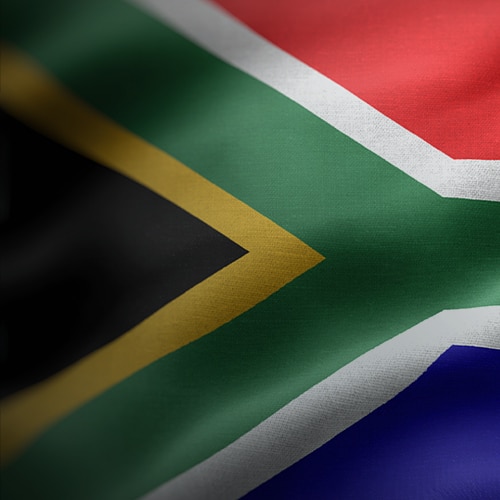The Coffee Table Economics (CTE) with Anchor note by Casey Sprake is distributed intermittently. It is a collection of Casey’s thoughts and perspectives on key economic factors, socio-political events, and the multiple dynamics shaping markets globally and in South Africa (SA).
Executive summary
In this week’s edition, we highlight the following:
- The shifting landscape of global trade: Resilience and redirection. As global trade flows adapt to rising protectionism and economic uncertainties, the resilience of certain sectors and economies highlights their ability to navigate these headwinds. However, the broader decline in global trade underscores the urgent need for strategies that balance national interests with the benefits of open markets.
- SA 3Q24 GDP: Poor agricultural performance bursts the GNU optimism bubble. Despite an improvement in economic sentiment following the formation of the Government of National Unity (GNU), SA’s economy unexpectedly shrank by 0.3% in 2Q24, starkly contrasting the revised growth of 0.3% recorded in 2Q24. The subdued gross domestic product (GDP) data casts doubt on the South African Reserve Bank’s (SARB) modest full-year growth projection of 1.1% for 2024.
- Festive optimism amid challenges: Consumer confidence nears five-year high. The FNB/BER Consumer Confidence Index (CCI) saw a slight decline in 4Q24, dropping by one point from -5 in 3Q24 to -6. While this marks a minor setback, the latest reading remains the best festive season consumer confidence level since 2019 and is significantly higher than the -17 recorded in the same period of 2023.
The shifting landscape of global trade: Resilience and redirection
Global trade dynamics are undergoing significant changes as protectionist policies and economic disruptions reshape the strategies of the world’s largest exporters. Some countries have demonstrated remarkable resilience amid these challenges, while others grapple with structural shifts in their export profiles. China, the world’s largest exporter, has continued to dominate global trade despite a growing wave of tariffs and trade restrictions. According to the latest World Trade Organisation (WTO) data, in 2023, China exported US$3.4trn worth of goods, surpassing the US by nearly US$1.4trn. This resilience stems partly from the competitiveness of its manufacturing sector, which saw export prices fall by 10% on average last year. While the US remains a key market, importing US$500bn of Chinese goods in 2023, these volumes could face pressure under President-elect Donal Trump’s administration with its continued emphasis on decoupling and tariff increases.
On a global scale, trade volumes have contracted as protectionism rises. In 2023, worldwide exports of goods declined by 5%, totalling US$23.8trn. The number of trade restrictions globally has surged to nearly 3,000—five times the levels in 2015. This shift has reduced the dollar value of exports from 20 of the top 30 exporters, underscoring the broad impact of heightened trade barriers. Although no longer the world’s largest exporter since 1979, the US has experienced a notable transformation in its trade dynamics. While its goods trade deficit remains a defining feature, a dramatic shift in energy exports has strengthened its overall trade balance. The US achieved a US$65bn net energy surplus in 2023, a remarkable shift from a deficit over the past decade. This surplus is attributed to a rise in domestic energy production, which has not only bolstered export volumes but also insulated the country from oil price shocks like those triggered by Russia’s war on Ukraine. Germany, the third-largest exporter, presents a contrasting narrative. In 2023, the country recorded a modest 1% increase in goods exports despite an economic contraction. However, energy-intensive industries were hit hard by rising oil prices, leading several firms to pause production. The US remains Germany’s largest export market, with US$160bn in goods exported last year. However, Trump’s proposed tariffs could reduce these exports by as much as 15%, with the automotive and pharmaceutical sectors facing YoY declines of 32% and 35%, respectively.
The bottom line
As global trade flows adapt to rising protectionism and economic uncertainties, the resilience of certain sectors and economies highlights their ability to navigate these headwinds. However, the broader decline in global trade underscores the urgent need for strategies that balance national interests with the benefits of open markets. In this rapidly evolving landscape, the ability to adapt will determine the future competitiveness of the world’s leading exporters.
SA 3Q24 GDP: Poor agricultural performance bursts the GNU optimism bubble
Despite an improvement in economic sentiment following the formation of the GNU, SA’s economy unexpectedly contracted in 3Q24. GDP shrank by 0.3% QoQ, starkly contrasting the revised growth of 0.3% recorded in 2Q24. This downturn underscores persistent challenges within the country’s economic landscape. The contraction was primarily driven by a significant agricultural sector slowdown, which emerged as the main drag on production (supply side). Other key sectors, including transport, trade, and government services, also contributed to the economic decline. On the expenditure (demand) side, the economy faced setbacks due to declining imports, exports, and government consumption, reflecting broader domestic and external demand weaknesses. The implication of this weak third-quarter performance for SA’s overall economic outlook is of particular concern. The subdued GDP data casts doubt on the SARB’s modest full-year growth projection of 1.1% for 2024. While there is hope for accelerated growth in the final quarter (4Q24), the current trajectory suggests that meeting the target will be challenging. This underscores the urgent need for robust interventions to address structural issues and boost economic resilience.
The latest GDP data for 3Q24 reflects a combination of significant challenges and areas of resilience. On the production side, agriculture experienced a sharp contraction of 28.8% QoQ, reducing overall GDP growth by 0.7%. This decline was driven by severe drought and adverse weather conditions, which disrupted the production of key crops such as maize, wheat, and sunflowers, as well as fruit and vegetable harvests. Other sectors also struggled, including transport, trade, and catering, which faced declines in land transport activity, wholesale trade, and food services. The general government sector further contracted due to reduced civil service employment. Amid these difficulties, certain sectors demonstrated resilience. The finance industry emerged as a major contributor to GDP, supported by strong performance in banking, insurance, and real estate. Mining posted gains, driven by increased manganese and chromium production, while the electricity and water supply sector expanded for a second consecutive quarter. The construction sector showed notable growth of 1.1%, its largest increase in two years, primarily due to non-residential building projects. On the expenditure side, trade presented notable weaknesses, with exports falling 3.7%—the steepest decline in three years—due to subdued global demand and logistical challenges. Imports mirrored this trend, contracting by 3.9% as domestic demand for high-value goods declined. Nevertheless, household spending provided a measure of stability, rising by 0.5%, driven by improved disposable income and consumer sentiment. However, transport-related expenditures declined due to elevated fuel prices and interest rates.
Investment recorded a modest recovery, with gross fixed capital formation increasing by 0.3%, driven by public sector spending on construction and machinery. However, private sector investment remains subdued, still 30% below pre-pandemic levels despite a recent improvement in business confidence. While sectors such as renewable energy show signs of promise, broader private investment recovery remains sluggish. Overall, the data highlights a complex economic landscape. Resilient sectors such as finance, mining, and construction provide grounds for cautious optimism. Still, persistent weaknesses in agriculture, trade, and private investment underline the need for targeted policies to address structural barriers and enhance competitiveness. Strengthening these areas will be critical to fostering a more sustainable and robust economic recovery.
Notably, excluding the agricultural sector, SA’s economy would have grown by 0.4% in 3Q24, as most other industries performed largely in line with expectations. However, the sharp decline in agriculture highlights the vulnerability of the broader economy to sector-specific shocks. Nonetheless, the overall GDP contraction in 3Q is a significant setback for the GNU’s pledge to prioritise economic growth. Over the past decade, the country’s economic expansion has averaged less than 1% p.a., consistently trailing population growth. This stagnation emphasises the pressing need for structural reforms and targeted interventions to drive sustained and inclusive growth.
Moreover, the average SA consumer is, in fact, becoming poorer – the latest data from the International Monetary Fund (IMF) indicates that SA’s GDP per capita is now below the average for emerging economies – and at about the same level as in 2005. According to IMF data, SA’s GDP per capita dropped from US$6,680 in 2022 to US$6,190 in 2023 – far below the record-high of US$8,800 recorded in 2012. Additionally, the 2023 domestic GDP per capita is below the US$6,450 average for emerging and developing markets. Notably, this is the same level of GDP per capita as in 2005. Simply put, SA’s expanding population growth, the weakness of the rand and the minimal economic growth means that the country’s population has been getting poorer in real terms. Moreover, in the domestic economy, material job creation has only occurred when GDP growth approaches 3% p.a. Thus, the economy is simply not growing at an adequate rate to sustainably boost long-term employment prospects for South Africans.
The bottom line
Despite the significant challenges facing SA’s economy, the positive performance of certain key industries underscores opportunities for targeted interventions to stimulate growth and build resilience. Sectors such as finance, mining, manufacturing, and electricity generation have shown encouraging signs of recovery, demonstrating their potential to contribute meaningfully to the broader economic revival. By prioritising reforms and investments in these areas, the government and private sector can create a foundation for more sustainable growth. For example, enhancing infrastructure, fostering innovation, and addressing regulatory bottlenecks could amplify gains in these industries. Moreover, promoting partnerships between the public and private sectors could unlock additional resources and expertise, further strengthening the economy. As the country navigates its way through persistent headwinds, leveraging these opportunities will be essential to drive inclusive growth, improve employment prospects, and increase economic resilience in the months ahead.
Festive optimism amid challenges: Consumer confidence nears five-year high
The FNB/BER CCI saw a slight decline in 4Q24, dropping by one point from -5 in 3Q24 to -6. While this marks a minor setback, the latest reading remains the best festive season consumer confidence level since 2019 and is significantly higher than the -17 recorded in the same period of 2023. Despite the marginal drop, the surge in consumer confidence throughout 2024 indicates a notable improvement in consumer sentiment, with a greater willingness to spend during the holiday season.
The slight decline in the CCI during 4Q24 is attributed to modest dips in two key sub-indices. The economic outlook sub-index, which had improved from -9 to -7 in 3Q24, fell back to -9, matching its 2Q24 level. Similarly, the household finances sub-index dropped from 14 to 11, remaining above levels recorded in the first half of the year. Conversely, the sub-index measuring the suitability of the current period for purchasing durable goods, such as vehicles and appliances, continued to improve, rising from -23 to -21—a two-year high—reflecting growing consumer readiness for big-ticket spending.
Sentiment shifts varied across income groups. Confidence among high-income households (earning over R20,000/month) improved further, rising from -6 in 3Q24 to -4 in 4Q24—a five-year high for this group. In contrast, middle-income households (earning R5,000 to R20,000/month) saw confidence levels decline to -7 after a strong recovery to -3 in the previous quarter. Low-income households (earning below R5,000/month) remained steady at -7, showing no change QoQ.
The significant rise in consumer confidence earlier in 2024 can largely be attributed to several positive developments. These include the establishment of a GNU, the end of loadshedding, a sharp drop in inflation, two interest rate cuts (thus far totalling 50 bps) and the rollout of the two-pot retirement system. However, sentiment faced headwinds in 4Q24, including rand depreciation, a ZAc25 increase in petrol prices, falling stock prices on the JSE, and global trade uncertainties following Trump’s re-election as US president. Despite these challenges, consumer confidence heading into the festive season remains just one point shy of a five-year high. This level of optimism is expected to support spending during the holiday period, offering favourable conditions for consumer-focused companies. The combination of improved sentiment among high-income earners and a greater willingness to purchase durable goods could boost retail activity, providing a solid foundation for economic momentum in the year’s final quarter.
Bottom line
Although the upward trajectory of the CCI plateaued in 4Q24, the latest reading of -6 marks the highest festive season confidence level since before the outbreak of the COVID-19 pandemic. This strong performance underscores a substantial rebound in consumer sentiment compared to the same period last year. The surge in confidence since late 2023 reflects a notable increase in consumers’ readiness to spend, driven by improved sentiment and enhanced financial capacity. Several factors have contributed to this improved ability to spend. A marked deceleration in inflation throughout 2024 has eased pressure on household budgets, while two 25-bp interest rate cuts have reduced borrowing costs.
Additionally, introducing the two-pot retirement system has injected an estimated R40bn into the economy, significantly boosting disposable income. Together, these elements have strengthened consumers’ purchasing power, particularly among affluent households with the greatest spending capacity. This combination of heightened willingness and ability to spend bodes well for the retail sector during the festive season. High-income consumers, who typically drive demand for discretionary goods and big-ticket items, are expected to lead the charge, bolstering sales across various retail categories. With the festive season shopping splurge likely to be more cheery this year, the improved confidence and financial environment could mark a turning point for consumer-oriented businesses, positioning them for a robust end to the year.




